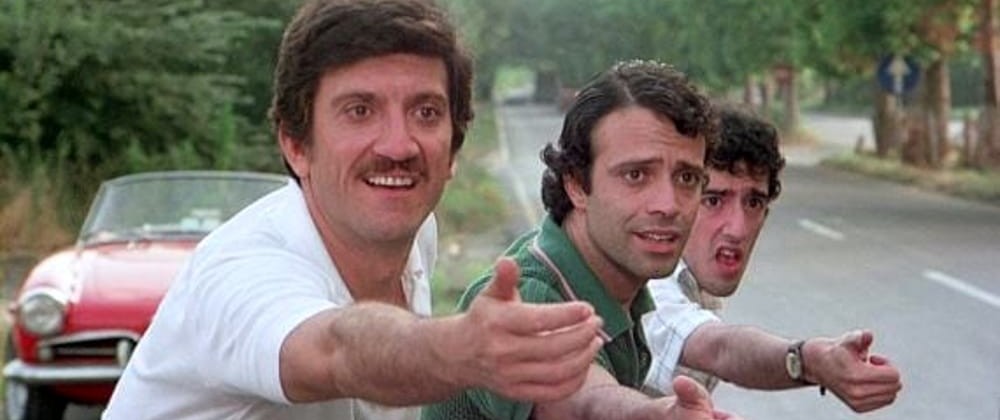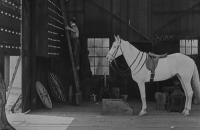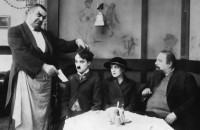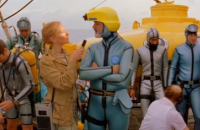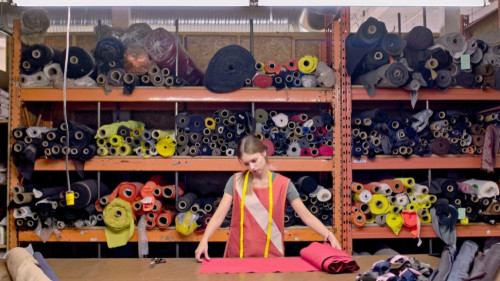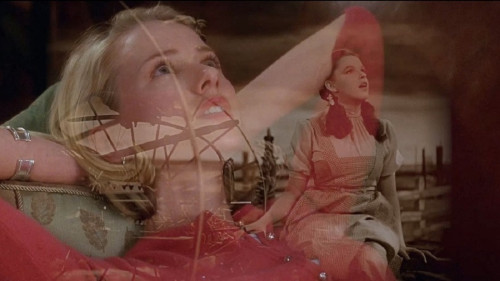Volume 22, Issue 5 / May 2018
Comedy Old and New
In this issue
Comedy is perhaps the one genre best shared by young and old. Although comedy is so broad and can encompass so many styles, tones, moods and subject matter, that it is far less defined as a genre than, say the western or musical. But comedy, especially the physical kind, is something that can be wonderfully shared by all. Which is why I have spent many hours watching (and laughing at) the films of The Three Stooges, Laurel and Hardy, Abbot and Costello, Mr. Bean, the Warner bros. cartoons and many others with my 8-year-old son. And that included taking him to the Film Society’s benefit screening of Silent Comedy greats Chaplin, Keaton and Lloyd (Douglas Buck, who wrote one of the two pieces on that screening in this issue, also brought his teenage daughter to the screening). The Film Society, owned and run by my good friend Philippe Spurrell, is one of my favorite organizations in Montreal, a film club in the truest sense of the word, dedicated to promoting film history and encouraging the social aspect of the film going experience. The first two articles, from myself and Douglas Buck, cover the benefit evening. The next three articles show the range of comedy, which can aim purely for laughter, while also blending the laughs with serious issues. David George Menard places Jim Jarmusch’s deadpan comedy masterpiece Stranger Than Paradise within the context of American Independent cinema. And Tom Hemingway studies a director whose style as a narrative filmmaker is nearly as extreme as Jim Jarmusch’s in Stranger Than Paradise, Wes Anderson. Hemingway analyzes The Life Aquatic with Steve Zissou as a work which he thinks many critics have misunderstood because of its oscillation between irony and genuine drama. Tom Hemingway analyzes the unique comedic style of Wes Anderson, whose extreme composition and color style often over rides the attempted tonal shifts between irony, postmodernism, pastiche and drama. Hemingway argues for a nuanced treatment of this style across the film’s documentary film-within-a-film structure. And explains the tonal shifts by positioning the film within what Timotheus Vermeulen and Robin van den Akkerdefine define as “metamodernism”. The final article is a review of Tully (2018) by Grant Wiedenfeld, which he labels a “dramedy” about a 40 year-old knackered mother/wife named Marlo (played by Charlize Theron) experiencing a mid-life crisis and a somewhat fantastical outcome.
As this issue went to ‘press’ (which is behind the actual calendar date) I learned of the death of Italian comedy writer and director Carlo Vanzina (1951-July 8, 2018). Some Italian film critics would label Vanzina’s films with the derogatory term, “cinepanettoni” (panettoni being a popular Italian sweet bread sold especially around holidays, and in fact many of Vanzina’s biggest hits were about vacations and holidays). Critics aside, with over 140 writing and directing credits Vanzina was a prolific and much loved figure in Italy, and was known even abroad (he studied French at Rome and made films and friends in Hollywood and the UK) as a kind, giving and generous filmmaker. Although he may not be a household name outside Italy, his films were hugely popular in Italy and, as a commercial filmmaker, was seen as a filmmaker who best represented the Italian character. His best known films include Sapore di mare (1983), Vacanze di Natale (1983), Vacanze in America (1984), The Gamble (1988, with Faye Dunaway, Matthew Modine, and Jennifer Beals), Io no spik inglish (1995), and Febbre da Cavallo: La mandrakata (2002, which is a sequel to his father Stefano Vanzina’s —better known as Steno— 1976 Febbre da cavallo). His wife Lisa and brother Enrico announced his death to the public with the following words. “Nella sua amata Roma, dov’era nato, ancora troppo giovane e nel pieno della maturità intellettuale, dopo una lotta lucida e coraggiosa contro la malattia – si legge nella nota della famiglia – ci ha lasciati il grande regista Carlo Vanzina amato da milioni di spettatori ai quali, con i suoi film, ha regalato allegria, umorismo e uno sguardo affettuoso per capire il nostro Paese”. (“In his beloved Rome, where he was born, still too young and in the height of his intellectual maturity, after a long and courageous battle with an illness, the great director Carlo Vanzina has left us. Carlo Vanzina was loved by millions of spectators, whom he gifted with his films, joy, humor and an affectionate look which helped explain our country.”) This issue is dedicated to the lifetime of laughs provided by Carlo Vanzina. (Donato Totaro, ed.)
Featured image from Vanzina’s Febbre da cavallo

